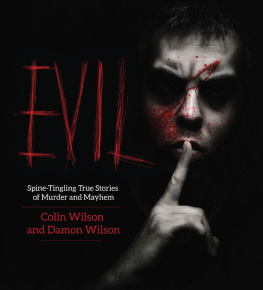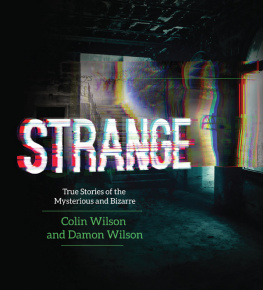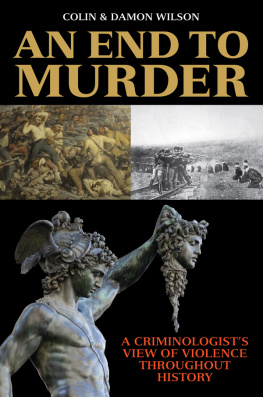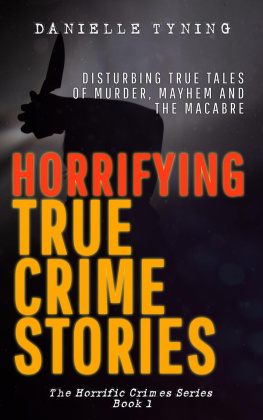Copyright 2009 by Langenscheidt Publishing Group and Moseley Road Inc.
First Skyhorse Publishing edition 2014.
All rights reserved. No part of this book may be reproduced in any manner without the express written consent of the publisher, except in the case of brief excerpts in critical reviews or articles. All inquiries should be addressed to Skyhorse Publishing, 307 West 36th Street, 11th Floor, New York, NY 10018.
Skyhorse Publishing books may be purchased in bulk at special discounts for sales promotion, corporate gifts, fund-raising, or educational purposes. Special editions can also be created to specifications. For details, contact the Special Sales Department, Skyhorse Publishing, 307 West 36th Street, 11th Floor, New York, NY 10018 or .
Skyhorse and Skyhorse Publishing are registered trademarks of Skyhorse Publishing, Inc., a Delaware corporation.
Visit our website at www.skyhorsepublishing.com.
10 9 8 7 6 5 4 3 2 1
Library of Congress Cataloging-in-Publication Data is available on file.
Cover design by Rain Saukas
Cover photo credit: Thinkstock
Print ISBN: 978-1-62914-456-6
Ebook ISBN: 978-1-62914-938-7
Printed in China
Contents
A Gallery of Evil

How does one define evil? Is it a man who lures a child away from her parents, only to rape her, torture her, and then ultimately kill her? What about the assassin who kills an individual, sure that one death will save the lives of many? Then, of course, there are the mass murderers and serial killers, men (for they are almost always male), who pile up the bodies in unthinkable numbers. Surely all of the above can be called evil. But then that raises another questionwhy are we all so captivated by the subject? What draws the reader to disturbing tales of true crime?
When I was a child, my father brought home from work a book called The Fifty Most Amazing Crimes of the Last Hundred Years and unknowingly introduced me to a subject that has continued to fascinate me all my life.
The cases all had a sketch of the murderer at the head of the articleDr. Crippen, Henri Landru, and so on. But the one that fascinated me most was the one on Jack the Ripper, which had only a huge black question mark. The notion of a man who killed and disemboweled women struck me as so horrific as to be almost unbelievable.
My grandfather, who had been a small child at the time of the murders in 1888, remembered being warned by his mother not to stay out after dark, or Jack the Ripper might get you.
What baffled me, of course, was the problem of why a man should want to disembowel women. I was totally unable to grasp that the attack itself should satisfy sexual desire. And that, unfortunately, explains why so many of the monsters in these pages were obsessed by cruelty. All living animals are possessed by a desire to express themselves freely, to avoid frustration. But here we encounter a strange mystery. Why is it that a simple and straightforward desire for sex, a biological urge, which after all is an expression of affectionlike a kissshould turn into cruelty? And yet this is precisely what happens again and again in cases of sex criminals. It would seem that once human desire reaches a certain point of intensity, it mutates into something evil.
Now the Marquis de Sade, who was an expert on such matters, has a frighteningly simple explanation. He claims that nature itself is based on cruelty, from a cat tormenting a mouse to a tiger ripping its prey to pieces. We civilized humans prefer to close our eyes to this cruelty and declare that religion has taught us higher values. But, says Sade, these values are pure self-delusion. And to prove his case, he would point to some of the monsters in this book as examples of the natural cruelty of those with powerVlad the Impaler, Ivan the Terrible, and the Elizabeth Bthory.
But if Sade is correct in saying that people with power tend to misuse it, then why do mothers not beat their babies? Why did Sade himself not misuse it when he had the chance, for he was on a revolutionary tribunal and could have taken revenge on his mother-in-law, who had been responsible for having him thrown into the Bastille? Sade himself demonstrates that there is a force of natural decency in human beings.
Or, as Jung put it, The soul has a religious function.
In the following pages, you will read many stories of evil, including historic true crimes, from the assassination of Julius Caesar in ancient Rome to the assassination of Archduke Franz Ferdinand that set off World War I. In these pages you will meet the monsters of evilfrom medieval nobleman Gilles de Rais, the first recorded serial killer, to the infamous Manson Family of hippie-era California. There are also classic cases, that I would define as ones in which the killers choose murder as a way to solve problems, often caused by their own tangle of lies or self-indulgence, from the lawless gangsters of the Great Depression to Buck Ruxton, a successful English doctor, who killed his wife in a fit of jealousy. Of course, we include the serial killers, so many of whom are now household names: Ted Bundy, John Wayne Gacy, Henry Lee Lucas. We also take a look at some notable unsolved cases, including the Boston Strangler and Jack the Stripper.
And of course, the one who started it all: Jack the Ripper.
Colin Wilson
2009
Historic Evil
The Assassination of Julius Caesar
(Ides of March, 44 BCE )
Judging the young Gaius Julius Caesar, nobody in ancient Rome expected him to develop into a great national leader. He spent his youth (he was born in July 100 BCE ) as a fashionable fop: writing poetry, perfuming and curling his hair, and indulging in numerous love affairswith men as well as women, according to his enemies. His fellow Romans regarded him as a clever socialite but not a man likely to achieve high office. For all his artistic pretensions, however, Caesar was, at heart, a warlord.

The death of Caesar
The Radical Fop
In 65 BCE Caesar was elected as an aedile : the master of ceremonies in public celebrations. The Roman Senate still thought of him as a fop and a political lightweight, but Caesar put the posting to good use. He borrowed large sums from Crassus, a millionaire friend, and staged some spectacular public shows. One of them featured 320 pairs of gladiators.
Caesar was already immensely popular with the plebeians (the teeming, non-noble population of Rome) because, although of a high patrician (noble) house himself, he seemed to genuinely care about the lot of Romes poor. Thats why Crassus was willing to bankroll his friend almost without limitCaesar wielded considerable political clout with the reformist populares party.
Romes foremost military hero, Pompey the Great, came back from his conquests in the East in 62 BCE . Caesar suggested an alliance. He was the most popular man in Rome, Crassus was the richest, Pompey was its greatest hero; together they could do what they liked. This oddly assorted triothe ambitious millionaire, the egotistical general, and the still rather foppish man of the peopleentered into a partnership that would make them masters of Rome.



















